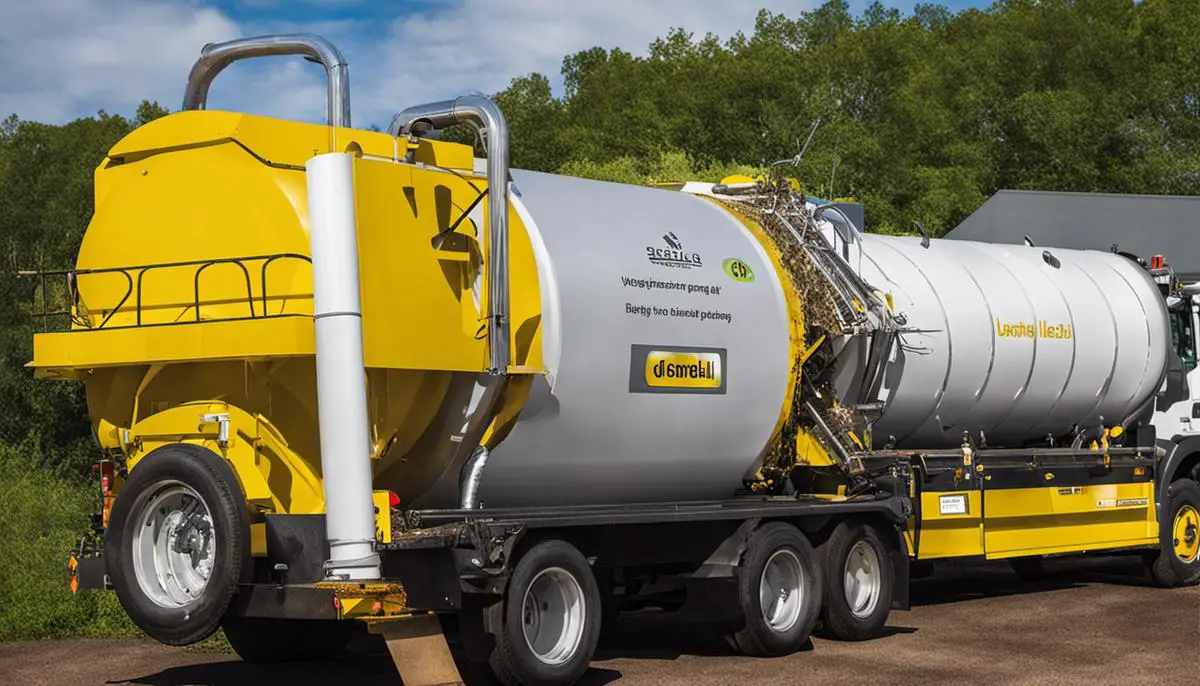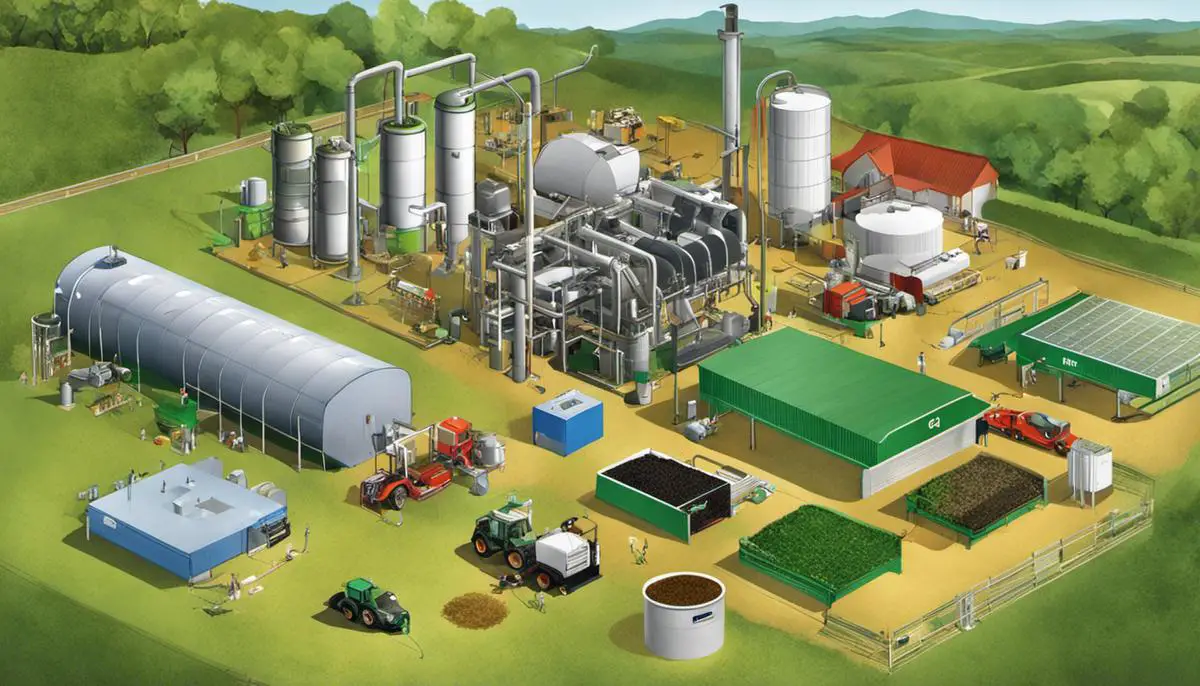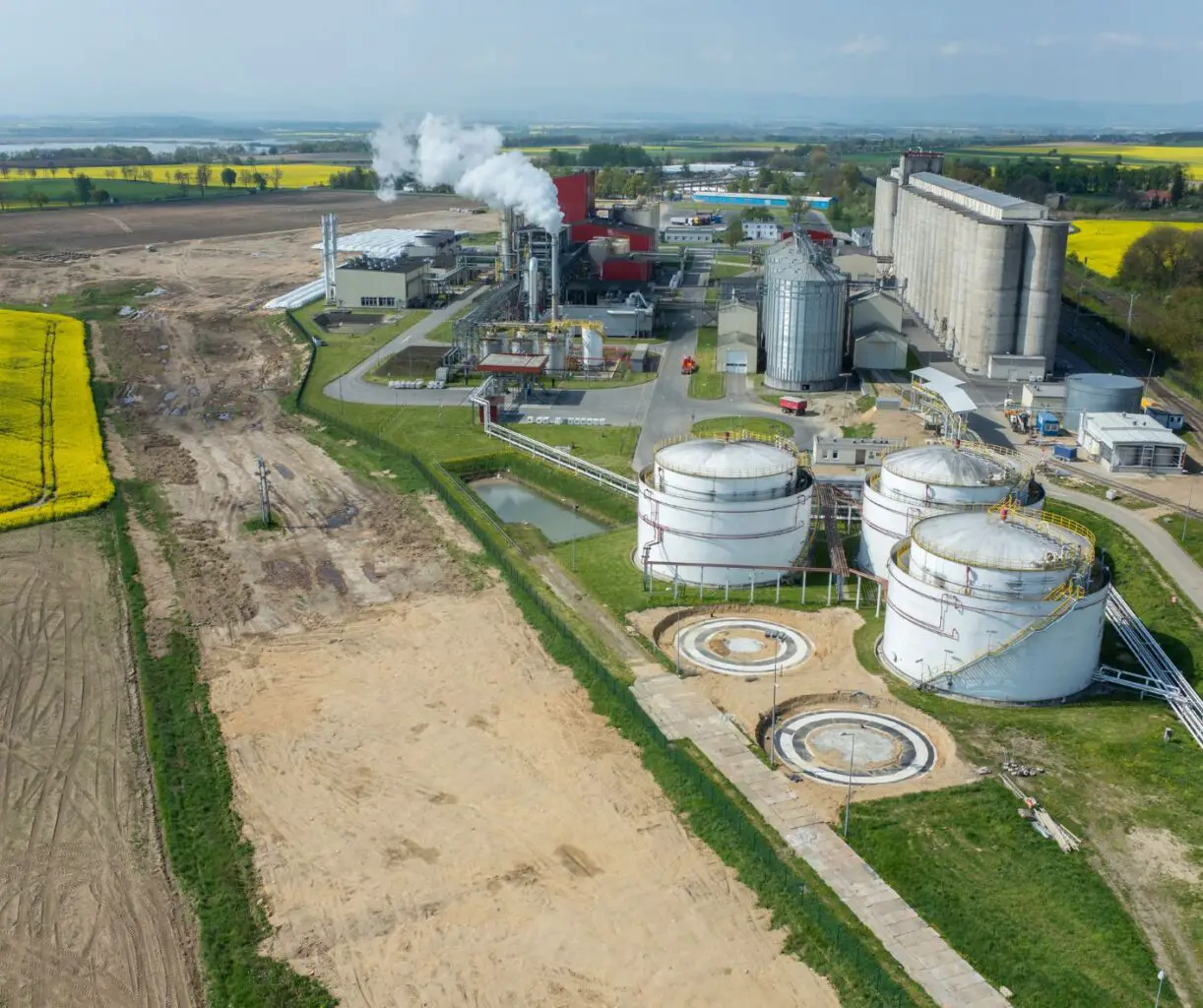The production and utilization of biofuels represent a significant stride towards sustainable energy practices in contemporary society. However, like any other industrial process, their production and use also give rise to different types of waste. This document embarks on an exploration of biofuels and bio-waste, providing an in-depth discussion on current disposal methods, the potential environmental and health impacts related to biofuel waste, and innovative and sustainable techniques for updated waste management. Finally, it places biofuel waste management within the context of policy and regulation, underscoring the roles they play in environmentally friendly waste disposal.
Understanding Biofuels and Bio-Waste

Current Methods of Biofuel Waste Disposal
Understanding Biofuel and Its Waste
Biofuel production includes converting organic matter into fuel for powering our society. Derived from plants and waste materials, biofuels present an opportunity for sustainable energy. Yet, they also come with considerable waste products that need managing. The leftover organic matter after biodiesel production, spent grain from ethanol production, and other waste material require safe and effective disposal methods to mitigate detrimental environmental impacts.
Current Methods of Biofuel Waste Disposal
Biofuel production waste is primarily disposed of through three methods: composting, anaerobic digestion, and incineration. Composting and anaerobic digestion are biological methods that use natural processes to break down organic waste. They are generally viewed as eco-friendly options. Meanwhile, incineration is a thermal process that includes complete combustion of waste, generating heat and power.
Composting Biofuel Waste
Composting is a natural process that involves the breakdown of organic matter by microorganisms in the presence of oxygen. This method is a widely adopted practice for disposing waste from biofuel production. The compost can be reused as a soil conditioner, improving soil quality and promoting plant growth. However, the process can be lengthy, and there’s the risk of unwanted gas emission such as methane and carbon dioxide.
Anaerobic Digestion of Biofuel Waste
In contrast, anaerobic digestion occurs in the absence of oxygen, where microorganisms are used to decompose the waste. It’s rapidly growing in popularity due to its dual benefit: waste management and energy production. The digestion process produces biogas, which can be used as a renewable energy source. However, it requires specific environmental conditions to operate effectively. Additionally, the digestate – the material remaining after digestion – needs further processing before it can be safely disposed of or used.
Incineration of Biofuel Waste
Incineration encompasses burning the waste at high temperatures, resulting in the production of heat or electricity. Although it significantly reduces waste mass and volume, it poses significant environmental concerns. These include toxic emissions and production of ash which requires special handling and disposal. Nonetheless, with the use of modern pollution control technologies, these detrimental environmental impacts can be minimized.
Understanding the Complexity of Biofuel Waste Management
Managing biofuel waste is indeed a complex task, given the diverse nature of this type of waste. Achieving an effective balance in disposal methods often involves blending ecological responsibility, fiscal viability, and the success of waste disposal. Biofuel waste disposal demands ongoing oversight, continuous research, and improvements in processes to ensure it aligns with and supports, rather than sabotaging, our goals for sustainable energy.

Environmental and Health Impacts
Scrutinizing the Environmental Impact of Biofuel Waste
While biofuels are promoted as a sustainable energy source, it’s crucial to appreciate that if the waste resultant from the production process is not appropriately managed, the consequences for the environment can be seriously damaging.
Consider this – the production process for biofuels involves crops like corn, soybeans, or sugarcane. Post-production, the leftover biomass waste is extensive. If this waste isn’t properly treated, dangerous amounts of methane can be released into the atmosphere, a gas that has around 21 times the potency of carbon dioxide as a greenhouse gas.
Additionally, the repercussions of discharging untreated waste into water bodies can be quite serious, leading to water pollution with potential drastic effects on aquatic ecosystems. High levels of pollutants can stimulate eutrophication; this process creates an over-supply of nutrients, triggering rampant growth of aquatic plants and algae. This uncontrolled growth can decrease oxygen levels and upset the balance of the ecosystem.
Health Impacts of Biofuel Waste
Biofuel waste also raises serious health concerns. The combustion of biofuels often releases particulate matter and other pollutants, such as nitrous oxides and volatile organic compounds. These pollutants can have detrimental effects on air quality, potentially causing respiratory issues and other health complications in humans.
Take, for instance, a study conducted by the National Institute of Environmental Health Sciences in the USA. The research revealed that, over time, exposure to particulate matter from biofuels can lead to the development of chronic obstructive pulmonary disease (COPD), lung cancer, and heart disease.
The Importance of Waste Management in Biofuel Production
The rising concerns regarding the environment and human health have heightened the relevance of responsible waste management within the biofuel industry. As we increasingly resort to bioenergy as a sustainable alternative, the need to adopt technologies and measures to minimize waste and capture harmful by-products has become a priority.
These measures can take the form of efficient production methods that generate less waste or processes that transform waste biogas into energy. At the same time, strict government regulations and guidelines play a fundamental role in ensuring that waste from biofuel production is handled properly, mitigating harm to the environment and human health.
The dynamics of waste management in biofuels also greatly relies on scientific research. Through intensive studies, new ways to diminish the negative impacts associated with biofuel waste can be discovered, paving the way for greener and more sustainable energy options.
In conclusion, while biofuels present a promising renewable energy option, it’s crucial to acknowledge and manage the environmental and health issues linked with their waste. With the right waste management systems and practices in place, biofuels could drive us towards a sustainable energy future with minimal harm to our planet and those who inhabit it.

Innovative and Sustainable Techniques for Biofuel Waste Management
Waste to Energy Conversion in Biofuel Management
One such promising strategy for managing biofuel waste is the waste-to-energy (WtE) conversion. This method exhibits both innovation and sustainability as it transforms waste material into useful energy, in forms such as heat, electricity, or fuel. By availing the dual benefits of reducing landfill use and lower carbon emissions, this technique marks a progressive step towards eco-friendly waste management.
Biomass, a frequent by-product of biofuel production, is a prime source for waste-to-energy conversion. The process involves incineration of biomass to create heat. This heat then generates steam, which ultimately leads to the production of electricity. Hence, innovative techniques like these lead the pathway to a sustainable energy future by transforming biofuel waste into viable resources.
Biofuel Waste and Composting
Applying composting methods to biofuel waste reduces its environmental impact, while also creating a valuable product. Specifically, the compost made from remains of biofuel production can act as a fertilizer, enhancing agriculture, gardening, and other plant-growing endeavors. Given that biofuels often come from plant-based sources such as corn or soybean, the resulting waste is rich in organic matter and nutrients that are beneficial to plant growth. Thus, composting not only provides a practical solution for biofuel waste management but also facilitates the nutrient cycle, contributing to environmental sustainability.
Recycling Biofuel Waste
Recycling biofuel waste is yet another earth-friendly approach to handling biofuel by-products. The recycling process involves repurposing waste or transforming it into useful materials or energy. In the context of biofuels, waste can be converted into additional bioenergy or other usable products. For instance, spent grains from ethanol production—once viewed as waste—are now being used as a protein-rich livestock feed. Moreover, cooking grease and used vegetable oil from restaurants, potential biofuel wastes that commonly clog city sewer systems, can be collected and refined into biodiesel, a cleaner replacement for conventional diesel fuel.
Exploring the Future of Biofuel Waste Management
There’s a bright future in the realm of sustainable biofuel waste management, thanks to many cutting-edge strategies currently in development. One of these involves algae, an organism with an impressive energy yield that can growing in many conditions, even in waste produced by other biofuel procedures or in wastewater. Once biofuel has been produced from the algae, the remaining biomass can be repurposed for various uses such as agricultural feed or as a source of further biofuel production.
Another intriguing area of research is waste-derived biochar, or a stable, carbon-rich form of charcoal created from waste. This presents the possibility for carbon storage, a sustainable replacement for fossil fuels, and improved waste clean up and water quality.
Last but not least, there’s the advent of microbial fuel cells (MFCs), a new technology able to transform organic waste, including waste from biofuel production, directly into electricity. This has the dual benefit of cleaning waste and producing electricity simultaneously, offering a promising path in biofuel waste management.
In conclusion, stimulated by significant advances in the areas of waste-to-energy conversion, composting, and recycling, as well as the promising development of algal biofuels, biochar, and microbial fuel cells, it seems that the sustainable management of biofuel waste has a far-reaching and fruitful future.

Policy and Regulation in Biofuel Waste Management
A Look at Existing Biofuel Waste Management Policies
While innovative advancements bring us closer to a brighter future, current biofuel waste management is guided by both federal and state regulations. A key player in this governance is the Environmental Protection Agency (EPA) that regulates biofuel production and waste management under the Renewable Fuel Standard (RFS) program. This program obligates certain amounts of renewable fuel to be used, either to replace or reduce petroleum-based transportation and heating fuels or jet fuel. Additionally, this program requires biofuel producers to adhere to laws concerning air and water quality, land use, and waste management.
However, the multifaceted nature of biofuel production and waste management often involves various regulatory entities. For instance, the Department of Agriculture offers grants and financial incentives to promote biofuel production and sustainability. Similarly, the Department of Energy lends its support through research and development in waste disposal and enhancing energy efficiency.
Variations in Local Regulations
Local policy and regulation can significantly vary in different states and communities, making a “one size fits all” approach to biofuel waste management challenging. Some areas have more stringent guidelines concerning agricultural and land use that can impact the growing and harvesting of biofuel feedstocks. Waste disposal and management regulations can also vary, influencing how byproducts from biofuel production get processed.
International Policy and Regulations
Internationally, biofuel waste management also falls under government regulations and policies, such as European Renewable Energy Directive (RED) and the International Organization for Standardization (ISO). These organizations set guidelines regarding biofuel production, including waste management. Compliance with these international norms is crucial for countries intending to trade biofuels.
Potential Changes in Policy and Regulation
Policy and regulation changes could enhance biofuel waste management efficiency at both local and international levels. For instance, increased regulation could lead to more efficient disposal practices, limiting the environmental impact of biofuel production.
Support for technological advancements can also change policy and regulation. For example, research into biochar – a byproduct of biofuel production that can improve soil quality and sequester carbon – could influence waste management policy development.
Incentives could be shifted to favor biofuel feedstocks that generate less waste or employ waste beneficially, such as in the production of animal feed or fertilizer. For example, algae produce significantly less waste than corn when converted into biofuel, indicating that regulations favoring algae over corn could lead to reduced waste production.
Transparency and Accountability in Biofuel Waste Management
Greater transparency and accountability are also potential changes to policy and regulation. Revisions could include thorough tracking and recording of biofuels from production to end use, which would require producers to account for and manage waste throughout the life cycle of biofuels. This could promote responsible waste management practices, allow for the identification of waste hotspots, and promote the implementation of effective waste reduction strategies.
In conclusion, biofuel waste management policies and regulations are complex and multifaceted. The potential for changes in policy and regulation offers an opportunity to enhance the efficiency of biofuel waste management practices across the globe.
As discussions around alternative energy sources continue to evolve, understanding the full range of implications, including waste management, has never been more critical. With a focus on biofuels, this document serves as a comprehensive guide, examining existing bio-waste disposal methods, exploring their impacts on health and the environment, and considering possible innovative techniques for greater sustainability. Furthermore, it provides an overview of the regulatory landscape, offering insights into current policies and the potential for future modifications to encourage more efficient biofuel waste management. Armed with this knowledge, readers will be better prepared to contribute to the discourse on sustainable energy solutions.




